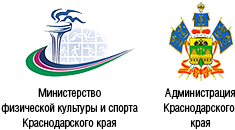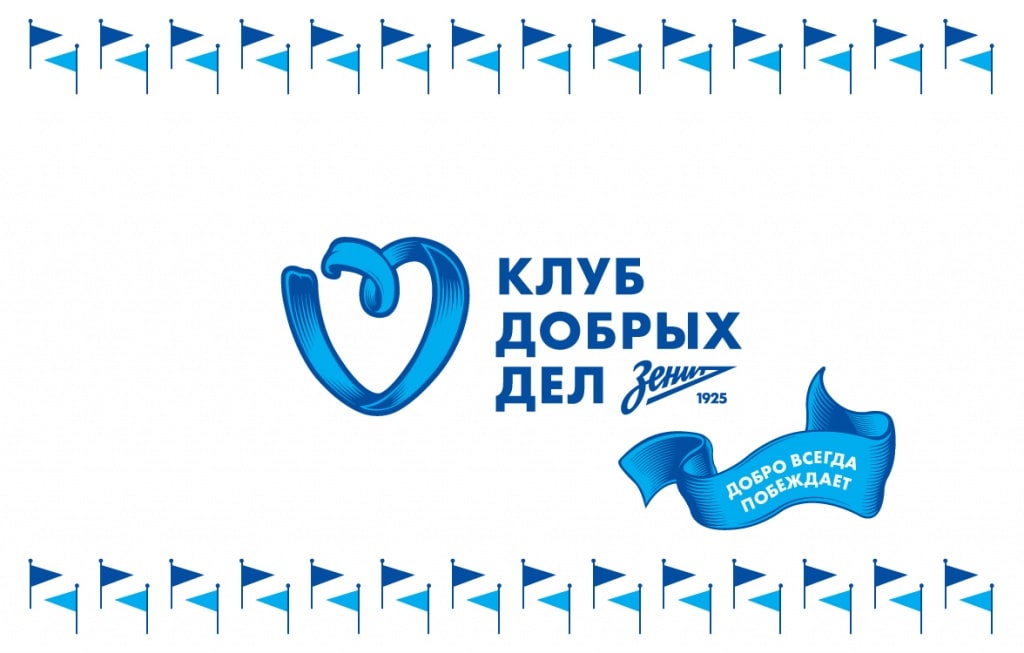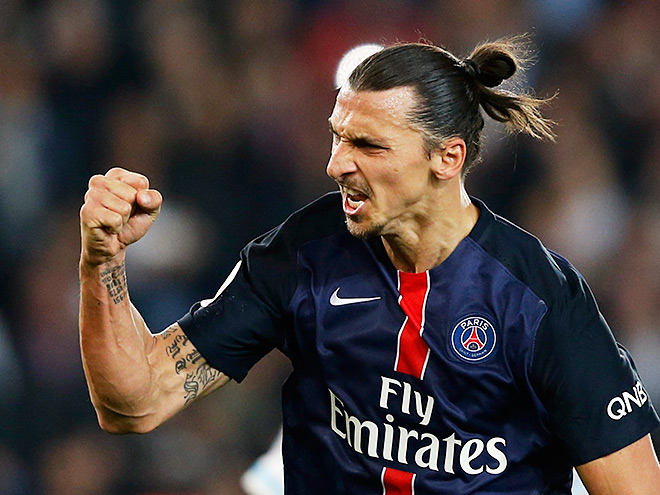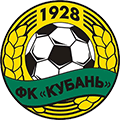Сборная Дании по футболу. Сборная дании футбол
Состав сборной Дании по футболу на ЧМ-2018
Сборная Дании по футболу успешно преодолела квалификационный этап чемпионата мира 2018, и получило право сыграть в финальной части турнира, которая пройдёт с 14 июня по 15 июля. «Алая Гвардия» заняла второе место в своей отборочной группе, поэтому играла стыковые матчи. Соперником скандинавской команды была Ирландия, которую ребята Оге Харейде переиграли по итогам двух матчевого противостояния со счётом 5:1.
По результатам жеребьёвки, соперниками датчан в групповом раунде ЧМ-2018 будут сборные Франции, Австралии и Перу. Французы фаворит, но с перуанцами и австралийцами скандинавы могут потягаться за второе место, которое даёт право сыграть в плей-офф. Главный тренер Дании определился с футболистами, которые отправятся в Россию, отстаивать честь страны и защищать цвета национального флага.
Состав датской сборной на Кубок мира по футболу 2018
Ниже представлена официальная версия состава на Кубок мира.
Вратари:
| Каспер Шмейхель | Лестер Сити |
| Йонас Лессль | Хаддерсфилд |
| Фредерик Рённов | Брондбю |
Защитники:
| Хенрик Дальсгор | Брентфорд |
| Симон Кьер | Севилья |
| Матиас Йоргенсен | Хаддерсфилд |
| Йонас Кнудсен | Ипсвич Таун |
| Андреас Кристенсен | Челси |
| Янник Вестергор | Боруссия Менхендгладбах |
| Йенс Ларсен | Удинезе |
Полузащитники:
| Кристиан Эриксен | Тоттенхэм |
| Лукас Лерагер | Бордо |
| Уильям Квист | Копенгаген |
| Лассе Шёне | Аякс |
| Микаэль Крон-Дели | Депортиво |
| Томас Дилейни | Вердер |
Нападающие:
| Мартин Брэйтуэйт | Бордо |
| Пионе Систо | Сельта |
| Каспер Дольберг | Аякс |
| Юссуф Поульсен | РБ Лейпциг |
| Андреас Корнелиус | Аталанта |
| Николай Йоргенсен | Фейенорд |
| Виктор Фишер | Копенгаген |
Звёзды и лидеры команды

Нынешняя сборная Дании имеет неплохой отряд футболистов. Некоторые из них выступают в сильнейших лигах планеты за лучшие клубы мира. Капитаном команды является центральный защитник испанской «Севильи» Симон Кьер, который имеет большой опыт выступлений на высоком уровне. Кроме Кьера, в составе Харейде можно отменить следующих исполнителей:
- Каспер Шмейхель. Выступает в Английской Премьер-лиги за «Лестер Сити». В сезоне 2015-16 становился победителем АПЛ. Владеет хорошей реакций и неплохо играет на выходах. Одной из его слабых сторон является неуверенная игра ногами.
- Андреас Кристенсен. Несмотря на свой молодой возраст, имеет доверие со стороны главного наставника «Челси» Антонио Конте. Кристенсен зрелый не по годам, и считается одним из самых перспективных оборонцев в мире.
- Кристиан Эриксен. Главная звезда датской сборной. Он выступает за лондонский «Тоттенхэм» на позиции плеймейкера или вингера. У Эриксена есть два козыря: точные передачи с разных дистанций, а также умение мастерски исполнять угловые и штрафные
За золотые медали, конечно, Дании не побороться на Кубке мира в России, но, как минимум, в 1/8 финала, команда с такими игроками должна выходить.
football-match24.com
Сборная Дании по футболу: результаты, статистика, рейтинг
Сборная Дании типичный европейский середняк, однако, в отличие от множества других средних команд, может похвастаться большим титулом – званием чемпиона Европы.
История сборной Дании по футболу
- Участие в финальной стадии чемпионатов мира: 4 раза.
- Участие в финальной стадии чемпионатов Европы: 8 раз.
Достижения сборной Дании
- Чемпион Европы 1992 года.
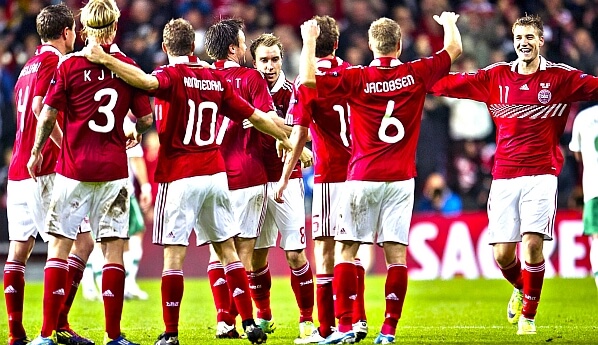
Сборная Дании одна из старейших команд континента, ее первый матч датирован еще 1908 годом. Долгое время прогресс датского футбола тормозила консервативность руководителей федерации, которые были ярыми приверженцами любительского спорта.
Мало того, что чемпионат Дании долгое время оставался любительским, так еще до 1976 года существовал труднообъяснимый с точки зрения здравого смысла запрет на приглашение в сборную футболистов, выступающих за профессиональные клубы.
Лишь после того, как в футбол в Дании встал на рельсы профессионализма, сборная этой страны стала добиваться успехов на международных турнирах.
Сборная Дании на чемпионатах мира
Первый успех к сборной Дании пришел на Евро-1984, но об этом чуть ниже. А на чемпионат мира датчане впервые попали в 1986 году. Обыграв сборные Шотландии 1:0, ФРГ 2:0 и разгромив 6:1 Уругвай, датчане были фаворитами матча 1/8 финала против Испании.
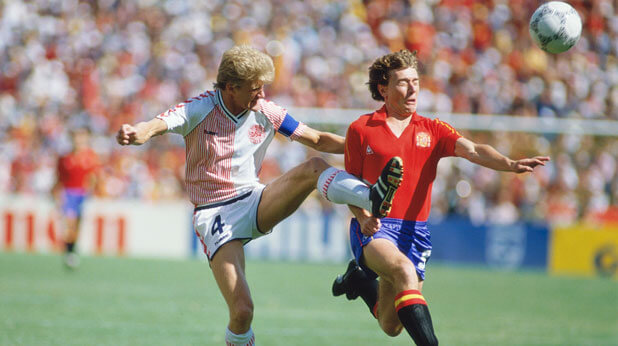
Поначалу прогнозы подтвердились – датчане открыли счет с пенальти, но затем после нелепой ошибки получили гол в «раздевалку», а во втором тайме еще четыре.
Пропустив два мундиаля, сборная Дании попала на чемпионат мира 1998 года. Пожалуй, эта была самая сильная сборная в истории. Петер Шмейхель и братья Лаудрупы были пусть уже не в расцвете сил, но еще далеко не в закате, кроме них с борной было еще несколько по-настоящему сильных футболистов, таких, как Томас Хельвег и Эббе Санд.
Заняв второе место в группе вслед за будущими чемпионами – сборной Франции, датчане вышли на сборную Нигерии, которая считалась бесспорным фаворитом матча. Однако подопечные шведского тренера Бу Юханссона продемонстрировали отменную выучку и дисциплину, образцово сыграв на контратаках – 4:1. А в четвертьфинале датчане дали настоящий бой бразильцам, действующим на тот момент чемпионам мира и уступили им со счетом 2:3.
Четыре года спустя на полях Японии и Южной Кореи сборная Дании здорово сыграла в группе: обыграв Уругвай и Францию и сыграв вничью со сборной Сенегала 3:3. Причем действующих чемпионов мира французов датчане обыграли в последнем туре, выбив их со стадии группового этапа.
А дальше приключилась история поразительно похожая на ту, что произошла в 1986 году. Тогда датчане крупно проиграли испанцам, а сейчас потерпели разгромное поражение от сборной Англии 0:3. Причем играли они не хуже соперника, просто у англичан в первом тайме залетало все, что летело в створ ворот.
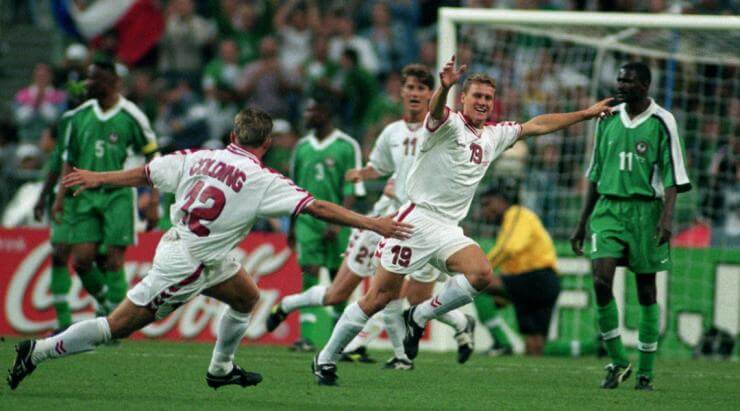
В последний раз мы лицезрели сборную Дании на чемпионате мира 2010 года. Там они проиграли голландцам и обыграли Камерун, но в последнем, решающем матче, уступили сборной Японии 1:3.
Сборная Дании на чемпионатах Европы
Впервые сборная Дании сыграла на чемпионате Европы 1964 года, тогда в финальной части принимало участие всего четыре сборные, а отборочный турнир проходил по олимпийской системе. Надо сказать, что сборной Дании сказочно повезло с соперниками – на пути в финальной части турнира они обыграли сборные Мальты, Албании и Люксембурга.
Понятно, что конкурировать с лучшими европейскими командами датчане тогда не могли и проиграли в полуфинале сборной СССР 0:3, а матче за третье место венграм 1:3. Правда, победу сборная Венгрии вырвала только в дополнительное время.
В следующий раз датчане квалифицировались на уже упомянутый мною чемпионат Европы 1984 года. Команда Зеппа Пионтека проиграла первый матч Франции, зато потом победила сборные Югославии 5:0 и Бельгии 3:2, проигрывая по ходу встречи 0:2. В полуфинале с испанцами датчане быстро открыли счет, но не смогли удержать преимущества, а затем уступили в серии пенальти.
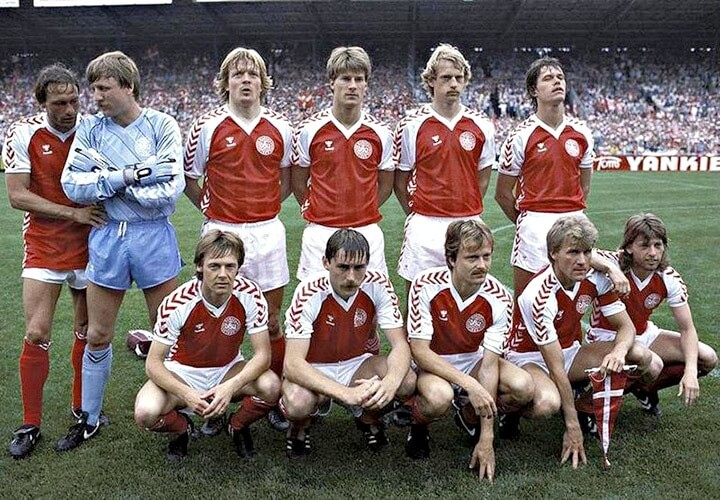
После этого датчане стали завсегдатаями европейских первенств, пропустив только два турнира – в 2008 и 2016 годах. Евро-1988 стал дебютным для великого голкипера Петера Шмейхеля. Он встал в ворота сборной начиная со второго матча, после того как первый номер Троэльс Расмуссен допустил несколько ошибок в матче с испанцами.
Хотя сборная Дании и проиграла тогда все три матча, ее выступление провальным не назовешь – слишком сильны были соперники, помимо упомянутых испанцев, это были сборные ФРГ и Италии.
А вот чемпионат Европы 1992 года стал самой яркой страницей в истории сборной Дании. Она выиграла это первенство, хотя изначально не должна была участвовать в турнире, уступив первое место в отборочной группе сборной Югославии.
Но из-за разразившейся на Балканах войны у югославов отняли честно завоеванную путевку и отдали ее сборной Дании, главный тренер которой Рихард Меллер-Нильсен столкнулся с рядом проблем.
Ведь узнали датчане об участии в турнире только за 10 дней до его начала. Футболисты уже разъехались по отпускам, кто-то активно нарушал спортивный режим, а времени на подготовку не было. К тому же Нильсен конфликтовал с Микаэлем Лаудрупом, который в ту пору за сборную не выступал. Не поехал он и на Евро.
Одно очко в двух стартовых матчах и ни одного забитого мяча – такой результат казался закономерным. Однако затем сборная Дании неожиданно для всех обыграла сборную Франции, в полуфинале (по пенальти) чемпионов Европы голландцев, а в финале – чемпионов мира немцев.
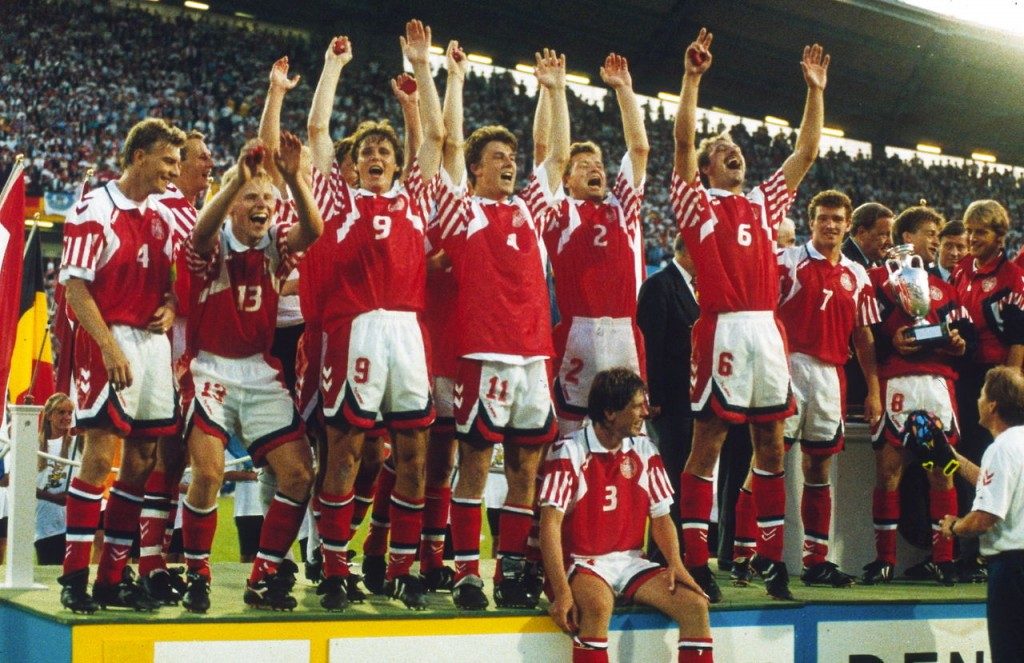
Четыре года спустя датчане не смогли выйти из группы, хотя в сборную вернулся Микаэль Лаудруп, да еще его младший брат Бриан здорово сыграл на Евро-1996, забив три из четырех командных мячей. Датчане набрали четыре очка, но для выхода из группы этого оказалось мало.
На Евро-2000 датчане потерпели три «сухих» поражения, а вот в 2004 году смогли выйти из группы. Именно тогда состоялся их матч со шведами, вошедший в историю мирового футбола как «скандинавский сговор». Команды в третьем туре сыграли 2:2, что при любом исходе параллельного матча отцепляло сборную Италии, поскольку первым дополнительным показателем была не разница мячей, а результаты личных встреч.
Большого скандала удалось избежать, поскольку итальянцы оказались хуже и по разнице забитых и пропущенных голов. Впрочем, в четвертьфинале возмездие настигло обоих заговорщиков: обе команды проиграли, причем датчане крупно (0:3 от сборной Чехии).
А на последнем для них европейском первенстве 2012 года датчане угодили в «группу смерти» с командами Германии, Португалии и Голландии. Выступили они достойно (победа над голландцами 1:0, поражения от португальцев 2:3 и немцев 1:2), но из группы выйти не смогли.
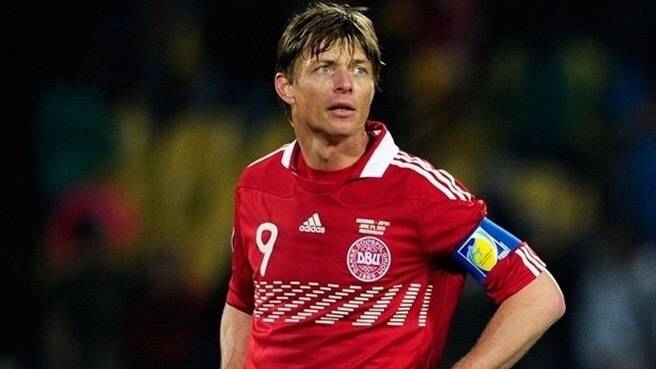
Игроки сборной Дании по футболу
Рекордсмены по числу проведенных матчей
- Петер Шмейхель – 129 матчей.
- Деннис Роммендаль –126.
- Йон-Даль Томассон – 112.
- Томас Хельвег – 108.
- Микаэль Лаудруп – 104.
Лучшие бомбардиры сборной Дании
- Поуль Нильсен и Йон-Даль Томассон – по 52 гола.
- Паули Йергенсен – 44.
- Оле Мадсен – 42.
- Пребен Элькьер-Ларсен – 38.
- Микаэль Лаудруп - 37.
Состав сборной Дании по футболу
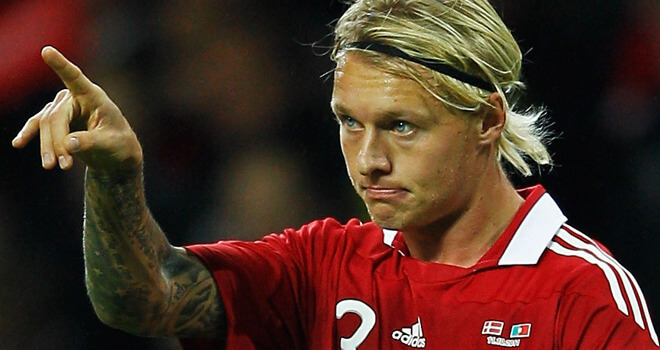
Игроки сборной Дании собираются со всей Европы, тут и бундеслига, и АПЛ, а так же чемпионаты Франции, Испании, Голландии, Турции, Норвегии, и, конечно же, Дании.
Выделим вратаря Каспера Шмейхеля, чемпиона Англии в составе «Лестера», центрального защитника «Ференбахче» Симона Кьяера, который еще недавно называли самым перспективным центральным защитником Европы, и Кристиана Эриксена из «Тоттенхэма», который на сегодня является одним из лучших атакующих полузащитников Европы.
Тренер сборной Дании по футболу
Тренирует сборную Дании норвежский специалист Оге Фритьоф Харейде, возглавивший команду в 2015 году. Он является обладателем уникального достижения – работая с клубами Дании, Швеции и Норвегии, он выиграл чемпионаты всех этих стран.
Как тренер сборной он работал с командой Норвегии с 2003 по 2008 год, но в финальную часть крупного турнира пробиться не смог.
Форма сборной Дании по футболу
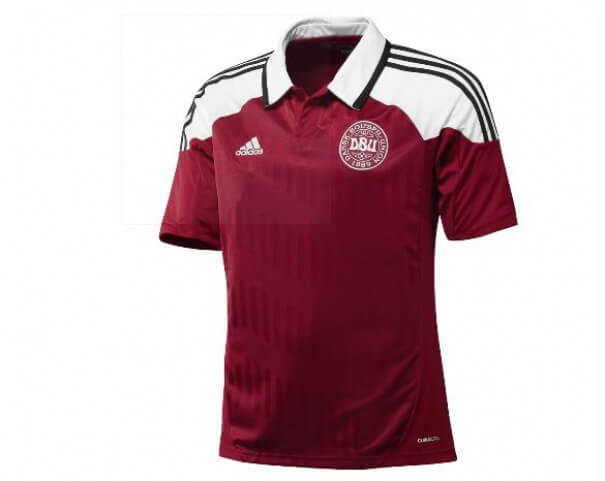
Эмблема сборной Дании
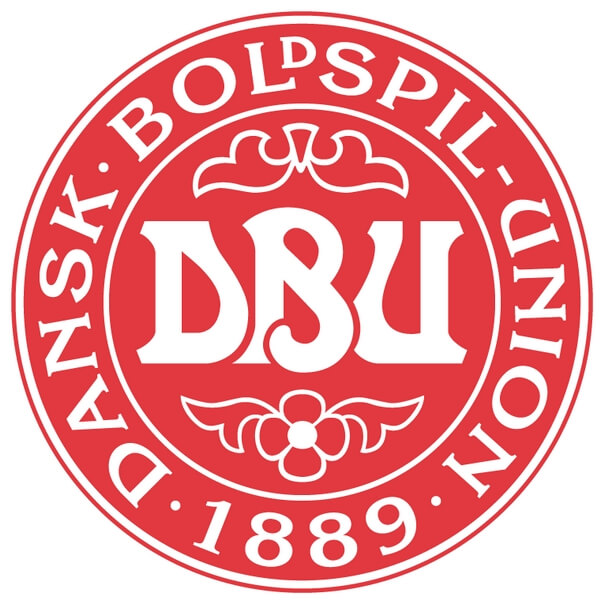
Болельщики сборной Дании
Фанаты сборной Дании называют себя ролиганами. Движение создано в противовес английским футбольным хулиганам. Датские болельщики отличаются миролюбием и спокойным поведением
Настоящее время
Пропустив два крупных турнира подряд(ЧМ-2014 и Евро-2016), датчане попали на мировое первенство 2018 года, где угодили в группу к сборным Франции, Австралии и Перу. Подробнее о раскладах в этой группе и шансах датчан можно узнать здесь.
football-pitch.ru
Сборная Дания по футболу - актуальный состав 2018, список игроков
1 578
282
100
66
15
13
12
9
8
7
5
5
5
5
4
3
2
2
2
2
1
1
1
1
1
1
1
1
1
1
1
0
0
0
0
0
0
0
0
0
0
0
0
0
0
0
0
0
0
0
www.footballtop.ru
Сборная Дании по футболу — WiKi
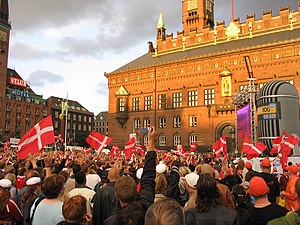 Датчане в Копенгагене смотрят матч Евро-2004 Дания — Швеция
Датчане в Копенгагене смотрят матч Евро-2004 Дания — Швеция Дания — одна из первых стран в Европе, которая стала развивать футбол. Многие датские клубы входят в число старейших в мире. Но строгая приверженность датчан принципам любительского спорта мешала им бороться на равных со странами, поставившими футбол на профессиональную основу.
Будучи сильной «любительской» нацией, датчане добились больших успехов на Олимпиадах — они заняли второе место в 1908, 1912 и 1960 годах, а также завоевали бронзовые медали в 1948 году. В стране было немало сильных футболистов, среди которых выделялся Нильс Миддельбё, с успехом выступавший за лондонский «Челси».
Период между мировыми войнами был неудачным для датчан, но выход в финальную часть Олимпиад 1948 и 1960 годов вселял надежду на возрождение. Однако прогрессу мешали любительский статус команд и запрет на участие в сборной игроков, выступающих в зарубежных клубах. В 1960 году в авиакатастрофе в Эресунне погибли несколько кандидатов в сборную Дании, из-за чего страна чуть не отказалась от участия в Олимпиаде в Риме.
В 70-е многие датские футболисты во главе с обладателем «Золотого мяча» 1977 года Алланом Симонсеном уехали играть за границу. Отмена запрета на приглашение «иностранцев» в 1976 году, несомненно, пошла на пользу сборной. Игравшие за европейские клубы Микаэль Лаудруп, Пребен Элькьер, Йеспер Ольсен, Мортен Ольсен и Сёрен Лербю составили ядро «датского динамита» — сборной 80-х. В 1984 году Дания дошла до полуфинала на чемпионате Европы, а в 1986 году вышла во второй круг чемпионата мира в Мексике.
В конце 80-х был реорганизован национальный чемпионат, и пришло новое поколение игроков — включая брата Микаэля Лаудрупа, Брайана, — которое привело Данию к золотым медалям чемпионата Европы-92. Их успех был тем более примечательным, что датчане попали в чемпионат в самый последний момент — вместо снятой Югославии. В 1995 г. команда завоевала Кубок Короля Фахда, позже переименованный в Кубок конфедераций. Датчане ярко проявили себя и на чемпионате мира-98 во Франции, дойдя до четвертьфинала, где они проиграли бразильцам.
Но на этом успехи датчан закончились. Братья Лаудрупы ушли из сборной, а новая сборная Дании просто-напросто провалилась на Евро-2000, проиграв все три матча группового турнира и не забив ни одного мяча. На чемпионате мира 2002, заняв в группе первое место, Дания была разгромлена в 1/8 финале Англией 0:3. На ЕВРО-2004 ситуация практически повторилась. Пропустив в группе только сборную Швеции, в плей-офф проиграли сборной Чехии опять же со счетом 0:3.
Для завсегдатаев крупных футбольных турниров отборочная кампания к Чемпионату мира 2006 сложилась неудачно. Попав в одну группу с сильными командами Турцией, Украиной и Грецией, ставшей чемпионом Европы 2004 года, команда смогла занять только третье место и не попала даже в стыковые матчи.
Также неудачно для датчан сложилась отборочная кампания к Евро 2008. Они заняли лишь четвёртое место в группе F после Испании, Швеции и Северной Ирландии. Во время домашнего матча со шведами на 88-й минуте при счёте 3:3 кто-то из болельщиков набросился на судью с кулаками после того, как арбитр назначил пенальти в ворота хозяев. Датчанам засчитали техническое поражение со счётом 0:3, а Футбольный союз Дании оштрафовали.
Отборочный турнир к ЧМ-2010 для датчан начался с невыразительной ничьи с венграми — 0:0, однако в выездном матче с Португалией четыре дня спустя датчане одержали волевую победу над хозяевами — 3:2, при том что все три гола датчан были забиты в последние 10 минут матча. Сборная Дании удачно прошла отборочные игры и напрямую вышла в финальную часть чемпионата мира.
В финальной части чемпионата мира датчане сыграли три игры. Уступили сборной Нидерландов 0:2[1], одержали волевую победу над Камеруном 2:1[2], а в решающем для себя матче проиграли Японии со счётом 1:3[3]. В итоге сборная Дании заняла третье место в группе и покинула турнир.
В квалификации к Евро-2012 датчане в своей группе боролись за попадание на чемпионат со сборными Португалии и Норвегии. Одержав домашнюю победу на стадионе «Паркен» в последнем матче отборочного турнира над сборной Португалии (2:1), Дания заняла первое место в группе и напрямую отобралась на чемпионат континента. Португалия по разнице забитых и пропущенных мячей опередила Норвегию и сохранила за собой второе место в группе.
На Евро датчане в первом матче в группе обыграли Нидерланды (1:0) и имели шансы выйти в плей-офф чемпионата, однако последующие поражения от команд Португалии и Германии позволили занять им лишь третье место в группе и покинуть турнир.
В отборочный турнир к ЧМ-2014 Дания попала в группу к сборным Италии, Чехии, Болгарии, Армении и Мальты. Дания заработала 16 очков, имея 4 победы, 4 ничьи и 2 поражения от Италии (1:3) и Армении (0:4). Дания заняла 2-е место в группе, но из-за худших показателей осталась без стыковых матчей.
В квалификации к Евро-2016 датчане в своей группе боролись за попадание на чемпионат со сборными Португалии, Сербии, Армении, Албании. Дания заняла третье место в группе и вынуждена была отбираться на чемпионат континента через стыковые матчи со шведами. В первом матче в гостях датчане уступили шведам 1:2, а дома сыграли вничью — 2:2.
В отборочном турнире ЧМ-2018 сборная Дании заняла второе место в группе, уступив первую строчку команде Польши, и вышла в плей-офф европейской квалификации. В стыковых матчах датчане победили Ирландию (0:0 дома и 5:1 на выезде) и получили путёвку на мундиаль.
По состоянию на 18 января 2018 года сборная в рейтинге ФИФА занимает 12-е место[4], а в рейтинге УЕФА на 11 октября 2017 года — 22-е[5].
ru-wiki.org
Сборная Дании по футболу - WikiVisually
1. УЕФА – The Union of European Football Associations is the administrative body for association football in Europe, although several member states are primarily or entirely located in Asia. It is one of six continental confederations of world footballs governing body FIFA, UEFA consists of 55 national association members. Until 1959 the main headquarters were located in Paris, and later in Bern, in 1995, UEFA headquarters were transferred to Nyon, Switzerland. Henri Delaunay was the first general secretary and Ebbe Schwartz the first president, UEFA was founded on 15 June 1954 in Basel, Switzerland after consultation between the Italian, French, and Belgian associations. The European football union began with 25 members, that number doubled by the early 1990s, UEFA membership coincides for the most part with recognition as a sovereign country in Europe, although there are some exceptions. Some UEFA members are not sovereign states, but form part of a recognized sovereign state in the context of international law. Some UEFA members are transcontinental states, countries which had been members of the Asian Football Confederation were also admitted to the European football association, particularly Israel and Kazakhstan. Additionally some UEFA member associations allow teams from outside their associations main territory to take part in their domestic competition, saarland Football Union 1954–1956 German football association of the German Democratic Republic 1954–1990 Football Federation of the Soviet Union 1954–1991, in 1992 became Russian Football Union. The newly independent 14 Soviet Republics created their own football associations, Football Association of Yugoslavia 1954–1992, became Football Association of Serbia and Montenegro. Bosnia and Herzegovina, Croatia, Macedonia and Slovenia became independent, Football Association of Serbia and Montenegro 1992–2006, became Football Association of Serbia. Montenegro, which became independent, created its own football association, the main competition for mens national teams is the UEFA European Football Championship, started in 1958, with the first finals in 1960, and known as the European Nations Cup until 1964. It is also called UEFA or the EURO, UEFA also runs national competitions at Under-21, Under-19 and Under-17 levels. For womens national teams, UEFA operates the UEFA Womens Championship for senior sides as well as Womens Under-19. UEFA also organized the UEFA-CAF Meridian Cup with CAF for youth teams in an effort to boost youth football, UEFA launched the UEFA Regions Cup, for semi-professional teams representing their local region, in 1999. In futsal there is the UEFA Futsal Championship and UEFA Futsal Under-21 Championship, the Italian, German, Spanish and French mens national teams are the sole teams to have won the European football championship in all categories. A second, lower-ranked competition is the UEFA Europa League and this competition, for national knockout cup winners and high-placed league teams, was launched by UEFA in 1971 as a successor of both the former UEFA Cup and the Inter-Cities Fairs Cup. A third competition, the UEFA Cup Winners Cup, which had started in 1960, was absorbed into the UEFA Cup in 1999, in womens football UEFA also conducts the UEFA Womens Champions League for club teams. The competition was first held in 2001, and known as the UEFA Womens Cup until 2009, the UEFA Super Cup pits the winners of the Champions League against the winners of the Europa League, and came into being in 1973
2. Датский футбольный союз – The Danish Football Association is the governing body of football in Denmark. It is the organization of the Danish football clubs and runs the professional Danish football leagues and it is based in the city of Brøndby and is a founding member of both FIFA and UEFA. The DBU has also been the body of futsal in Denmark since 2008. The DBU was founded in 1889 and was the first Football Association outside of Great Britain, however, it did not register games officially before the 1908 Summer Olympics, meaning that the win in the 1906 Intercalated Olympics tournament was not officially recorded by the DBU. Greenland is not a member of FIFA or any continental federation, the DBU awards the best national team players each year, with an award to the best senior team player, as well as the best player in three of the DBUs six national youth teams. Player of the Year Since 1963, the DBU has awarded the Danish Player of the Year in a vote amongst the Danish players, the record number of award wins is four, by Brian Laudrup. DBU found new sponsor DONG, an oil company, in 2004, official site in Danish and English Denmark at FIFA site Denmark at UEFA site
3. Шмейхель, Петер – Peter Bolesław Schmeichel MBE is a Danish former professional footballer who played as a goalkeeper, and was voted the IFFHS Worlds Best Goalkeeper in 1992 and 1993. Born in Gladsaxe, Copenhagen, Schmeichel was famous for his intimidating physique, a fierce competitor, he was known for his loud, unstinting criticism of mistakes he believed the defenders in front of him committed. Unusually for a goalkeeper, Schmeichel scored 11 goals during his career and he is also the most capped player for the Denmark national team, with 129 games between 1987 and 2001. In addition to Euro 92, he played for his country at the 1998 FIFA World Cup and he captained the national team in 30 matches. He also represented Gladsaxe Hero, Hvidovre, Brøndby, Sporting CP, Aston Villa and Manchester City in a career that lasted from 1981 until 2003, in 2003, Schmeichel was inducted into the English Football Hall of Fame in recognition of his impact on the English game. In March 2004, he was named as one of the 125 greatest living footballers and his son, Kasper, is also a professional football goalkeeper currently playing for Premier League side Leicester City and the Denmark national team. He inherited his middle name – Bolesław – from his great-grandfather and he spent his early years growing up in the town of Buddinge, Copenhagen, and began his football career playing for a team in the adjacent suburb of Høje-Gladsaxe. His first match came on 7 August 1972 at the age of 8, after a two-and-a-half-year unbeaten run, Schmeichel was approached by Hero, a team from a few divisions above Høje-Gladsaxe and with one of the largest youth football schemes in Denmark. Hero later merged with Gladsaxe to form Gladsaxe-Hero BK, and Schmeichel was presented with the opportunity to play for the Zealand FAs junior representative team. Eventually graduating to the Gladsaxe-Hero senior squad, Schmeichel met his first mentor in Svend Aage Hansen, the first team coach at the club, and later to become his father-in-law. With Gladsaxe-Hero already relegated from the Danish Third Division with three games to go, Hansen promoted Schmeichel and six others from the team for a match against Birkerød. The team lost 1–0, but Schmeichel received mentions in newspapers for his personal performance. Schmeichel admits that he had received an offer to play for B1903s youth team, the following season Gladsaxe-Hero needed only to avoid defeat to Stubbekøbing to prevent relegation from the Danish National League. In the end, Schmeichel played one of the games of his career, at the end of the game, Hansens daughter, Bente, ran onto the pitch and hugged Schmeichel. The two ended up going out as a couple, and they eventually got married, before becoming a professional footballer, Schmeichel had to work a number of jobs to make ends meet. His first job came in the department of a textile factory. He then spent 12 months as a cleaner at an old peoples home and he originally worked in the organisations shops, but three weeks after he joined, the store manager quit and Schmeichel was promoted to the position of sales manager. Soon after, Schmeichel was called upon to do his four weeks of military service
4. Нильсен, Поуль – Niels Poul Tist Nielsen was a Danish football player, who is the joint all-time best goalscorer for the Danish national team with 52 goals from only 38 matches, averaging 1.37 goals per match. He won a medal with the Danish team at the 1912 Summer Olympics. He played his career as a Striker for Kjøbenhavns Boldklub, with whom he won six Danish football championships, in Canada, he played for CNR Montreal and won a Dominion of Canada Championship in 1929. As a young boy Poul would sneak in to watch football games without paying, thus becoming a gratist, born in Copenhagen, Nielsen started playing football with Kjøbenhavns Boldklub, where he spent his entire senior career. He made his debut for the Danish national team on May 5,1910, as the then youngest Danish national team player at 18 years and 131 days of age, exceeding Vilhelm Wolfhagens age record from 1908. Nielsens record would remain for eight years, until the 18 years and 51 days old Valdemar Laursen became the youngest Danish national team debutant. He played one game at the 1912 Olympics, the 4–1 win against the Netherlands, denmark later successfully defended their Olympic silver medal, losing 2–4 to Great Britain in the final game, without Nielsen in the team. After the 1912 Olympics, Nielsen started scoring goals for the Danish national team at a record-setting pace and his tally in June 1916 was 23 goals in 12 national team games. He was a part of the KB team that won the 1917,1918,1922 and 1925 Danish championships, on October 14,1923, Poul Nielsen broke Sophus Hansens record from 1920, as Nielsen became the first Dane to play 32 international games. He ended his national career in September 1925, having scored a total 52 goals in 38 matches. Nielsens tally of 38 international matches was another Danish record, because his career spanned the nascent years of international football, Poul Nielsen never got a chance to play in the World Cup, his only world game was the 1912 Summer Olympics. Poul Tist Nielsen died in Copenhagen during August 1962, aged 70, Danish championship,1913,1914,1917,1918,1922,1925 Danish national team profile Haslund profile Peders Fodboldstatistik profile
5. Томассон, Йон-Даль – Jon Dahl Tomasson is a Danish football manager and former player, who is currently working for the Danish football team as an assistant manager. Tomasson is of Danish, Finnish and Icelandic heritage and was known for his strength and fine finishing as a forward. He was also honoured with the Danish Player of the Year award in both 2002 and 2004, born in Copenhagen, son of Bjarne Tomasson and Leila Dahl Petersen. Tomasson first started playing football as a five-year-old in the team of Solrød BK near Køge. At nine years of age, he moved to the biggest club in the area, in November 1992, aged 16, he made his senior debut for the club. During the next two years he helped the club to get promoted two times in a row, in December 1994, aged 18, he agreed on a transfer from Køge BK to the Dutch club SC Heerenveen, in the top-flight Eredivisie championship. A first-team regular by the 1995–96 season, Tomasson was the top scorer for the season as well. He increased this tally in the 1996–97 season to 18, and was top-scorer for the once again. On top of that, he won the Best Dutch Football Talent of 1996. Dalglish saw Tomasson as the perfect link-up player to England national team striker Alan Shearer, the partnership initially worked well, with Tomasson impressing during a pre-season friendly tournament in the Republic of Ireland. The bad performance of Tomasson came at a time, where the team also played a season below their previous standard. In the previous two seasons, Newcastle United had achieved a runner up position in the Premier League, and he returned to the Eredivisie in July 1998, where he joined Feyenoord and once again took the position of attacking midfielder. His first season there, the 1998–99 season, turned out successfully for the club, as won the Eredivisie championship. In this era of his career, Tomasson each season managed to score a number of goals. In 2002, Tomasson was a player in the Feyenoord team, that won its first international trophy in 26 years. He scored a total of four goals in the tournament, during the tournament, they defeated SC Freiburg, Rangers F. C. PSV Eindhoven and Internazionale Milano before meeting German team Borussia Dortmund in the final. Tomasson scored the goal to 3–1, in a game that ended 3–2 to Feyenoord, and he was subsequently voted man of the match. In summer 2002, Tomassons contract with Feyenoord was expiring, and after their UEFA Cup victory, he agreed a move to Italy on a free transfer, the 2002–03 season, Tomassons first at Milan, saw them winning the Italian Cup
6. Паркен (стадион) – Parken Stadium, known for sponsorship reasons as Telia Parken, is a football stadium in the Indre Østerbro district of Copenhagen, Denmark, built from 1990–1992. It currently has a capacity of 38,065 for football games, and is the ground of FC Copenhagen. The capacity for concerts exceeds the capacity for matches – the stadium can hold as many as 50,000 people with a setup and 55,000 with a center-stage setup. Telia Parken has been announced as one of 13 host venues of the UEFA Euro 2020 and it will host three group stage matches, as well as a round of 16 match. Telia Parken, originally named just Parken, was built on the site of former Denmark national stadium, Idrætsparken, from 1990 to 1992. The stadium was rebuilt by investors Baltica Finans A/S in turn of the guarantee from the Danish Football Association, the re-construction, tore down and re-built three of the original four stands, cost 640 million Danish kroner. Parken was included in UEFAs list of 4-star stadiums in the Autumn of 1993, being a 4-star stadium, Parken can not apply for the biggest European club game, the UEFA Champions League final, as that demands 50,000 seats. On 2 June 2007, Parken was the venue for the UEFA Euro 2008 qualifier fan attack, on 1 May 2014 a new stadium covering Wi-Fi solution, powered by Telia was published. The deal provides free high speed Wi-Fi for all spectators at any event at the stadium, the agreement includes a 7 year long naming sponsorship, and on 17 July 2014, the stadium name was changed to Telia Parken. Parken is also used as a venue, and hosted the Eurovision Song Contest 2001. As a direct consequence of this, and to make Parken a more useful venue in general, a retractable roof was applied to the existing structure. E. M. Metallica, Bruce Springsteen, Muse, Tina Turner, David Bowie, Roger Waters, Paul McCartney, Lady Gaga, Justin Bieber, One Direction and Michael Jackson have performed at Parken. The biggest concert ever held in Parken was a performance by Michael Jackson on 14 August 1997, during his HIStory tour, speedway Grand Prix of Denmark Official website Tourist info from copenhagen. com Stadium Guide Article Parken Stadium
7. Рейтинг сборных ФИФА – The rankings were introduced in December 1992, and eight teams have held the top position, of which Brazil have spent longest ranked first. A points system is used, with points being awarded based on the results of all FIFA-recognised full international matches, the ranking system was most recently revamped after the 2006 World Cup, with the first edition of the new series of rankings issued on 12 July 2006. The most significant change is that the rankings are now based on results over the four years instead of the previous eight years. Alternative systems have been devised, such as the World Football Elo Ratings, based on the Elo rating system used in chess and Go, ranking teams. In December 1992, FIFA first published a listing in order of its member associations to provide a basis for comparison of the relative strengths of these teams. From the following August, this list was more frequently updated, significant changes were implemented in January 1999 and again in July 2006, as a reaction to criticisms of the system. Membership of FIFA has expanded from 167 to 209 since the rankings began, the ranking formula used from August 1993 until December 1998 was very simplistic and quickly became noticed for its lack of supporting factors. When the rankings were introduced, a team received one point for a draw or three for a victory in FIFA-recognised matches – much the same as a traditional league scoring system. This was a simplistic approach, however, and FIFA quickly realised that there were many factors affecting international matches. In order to meet the objective of fairly and accurately comparing the strengths of various national sides. In January 1999, FIFA introduced a system of ranking calculation. For the ranking all matches, their scores and importance were all recorded, only matches for the senior mens national team were included. Separate ranking systems were used for other national sides such as womens and junior teams. The womens rankings were, and still are, based on a procedure which is a version of the Football Elo Ratings. FIFA announced that the system would be updated following the 2006 World Cup. The evaluation period was cut from eight to four years, goals scored and home or away advantage are no longer taken into account, and other aspects of the calculations, including the importance attributed to different types of match, have been revised. The first set of revised rankings and the methodology were announced on 12 July 2006. This change is rooted at least in part in widespread criticism of the ranking system
8. Сборная Франции по футболу – The France national football team represents France in international football. The teams colours are blue, white and red, and the coq gaulois its symbol, France are colloquially known as Les Bleus. France play home matches at the Stade de France in Saint-Denis, Paris, and they have won one FIFA World Cup, two UEFA European Football Championships, an Olympic tournament, and two FIFA Confederations Cups. France experienced much of its success in three major, in the 1950s, 1980s, and late 1990s/early 2000s respectively, which resulted in numerous major honours. In 1958, the team, led by Raymond Kopa and Just Fontaine, in 1984, France, led by Ballon dOr winner Michel Platini, won UEFA Euro 1984. Under the leadership of Didier Deschamps and three-time FIFA World Player of the Year Zinedine Zidane, two years later, the team triumphed at UEFA Euro 2000. France won the Confederations Cup in 2001 and 2003, and reached the final of the 2006 FIFA World Cup, the team also reached the final of UEFA Euro 2016, where they lost 1–0 to Portugal in extra time. France, Argentina and Brazil are the national teams that have won the three most important mens titles recognized by FIFA, the World Cup, the Confederations Cup. They have also won their continental championship. The following year, on 12 February 1905, France contested their home match against Switzerland. The match was played at the Parc des Princes in front of 500 supporters, France won the match 1–0 with the only goal coming from Gaston Cyprès. Due to disagreements between FIFA and the Union des Sociétés Françaises de Sports Athlétiques, the sports union. In 1919, the CFI transformed themselves into the French Football Federation, in 1921, the USFSA finally merged with the FFF. In July 1930, France appeared in the inaugural FIFA World Cup, in their first-ever World Cup match, France defeated Mexico 4–1 at the Estadio Pocitos in Montevideo. Lucien Laurent became notable in the match as he scored not only Frances first World Cup goal, conversely, France also became the first team to not score in a match after losing 1–0 to fellow group stage opponents Argentina. Another loss to Chile resulted in the team bowing out in the group stage, the following year saw the first selection of a black player to the national team. Raoul Diagne, who was of Senegalese descent, earned his first cap on 15 February in a 2–1 defeat to Czechoslovakia. Diagne later played with the team at the 1938 World Cup, alongside Larbi Benbarek, at the 1934 World Cup, France suffered elimination in the opening round, losing 3–2 to Austria
9. Лондон – London /ˈlʌndən/ is the capital and most populous city of England and the United Kingdom. Standing on the River Thames in the south east of the island of Great Britain and it was founded by the Romans, who named it Londinium. Londons ancient core, the City of London, largely retains its 1. 12-square-mile medieval boundaries. London is a global city in the arts, commerce, education, entertainment, fashion, finance, healthcare, media, professional services, research and development, tourism. It is crowned as the worlds largest financial centre and has the fifth- or sixth-largest metropolitan area GDP in the world, London is a world cultural capital. It is the worlds most-visited city as measured by international arrivals and has the worlds largest city airport system measured by passenger traffic, London is the worlds leading investment destination, hosting more international retailers and ultra high-net-worth individuals than any other city. Londons universities form the largest concentration of education institutes in Europe. In 2012, London became the first city to have hosted the modern Summer Olympic Games three times, London has a diverse range of people and cultures, and more than 300 languages are spoken in the region. Its estimated mid-2015 municipal population was 8,673,713, the largest of any city in the European Union, Londons urban area is the second most populous in the EU, after Paris, with 9,787,426 inhabitants at the 2011 census. The citys metropolitan area is the most populous in the EU with 13,879,757 inhabitants, the city-region therefore has a similar land area and population to that of the New York metropolitan area. London was the worlds most populous city from around 1831 to 1925, Other famous landmarks include Buckingham Palace, the London Eye, Piccadilly Circus, St Pauls Cathedral, Tower Bridge, Trafalgar Square, and The Shard. The London Underground is the oldest underground railway network in the world, the etymology of London is uncertain. It is an ancient name, found in sources from the 2nd century and it is recorded c.121 as Londinium, which points to Romano-British origin, and hand-written Roman tablets recovered in the city originating from AD 65/70-80 include the word Londinio. The earliest attempted explanation, now disregarded, is attributed to Geoffrey of Monmouth in Historia Regum Britanniae and this had it that the name originated from a supposed King Lud, who had allegedly taken over the city and named it Kaerlud. From 1898, it was accepted that the name was of Celtic origin and meant place belonging to a man called *Londinos. The ultimate difficulty lies in reconciling the Latin form Londinium with the modern Welsh Llundain, which should demand a form *lōndinion, from earlier *loundiniom. The possibility cannot be ruled out that the Welsh name was borrowed back in from English at a later date, and thus cannot be used as a basis from which to reconstruct the original name. Until 1889, the name London officially applied only to the City of London, two recent discoveries indicate probable very early settlements near the Thames in the London area
wikivisually.com

